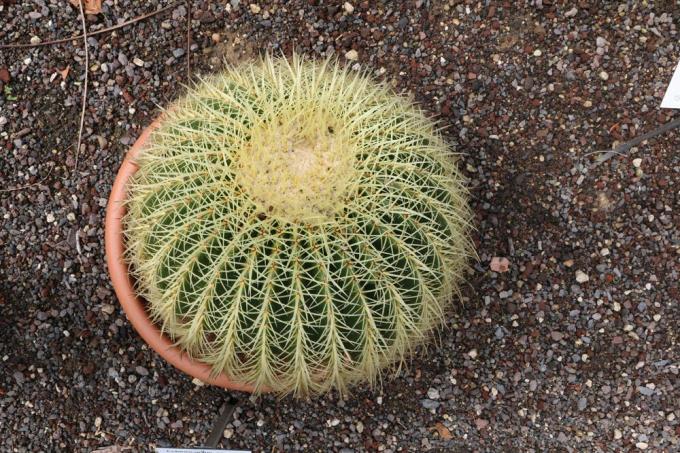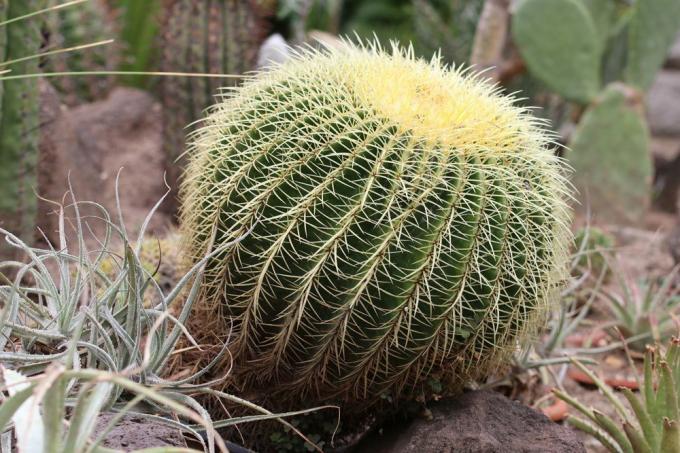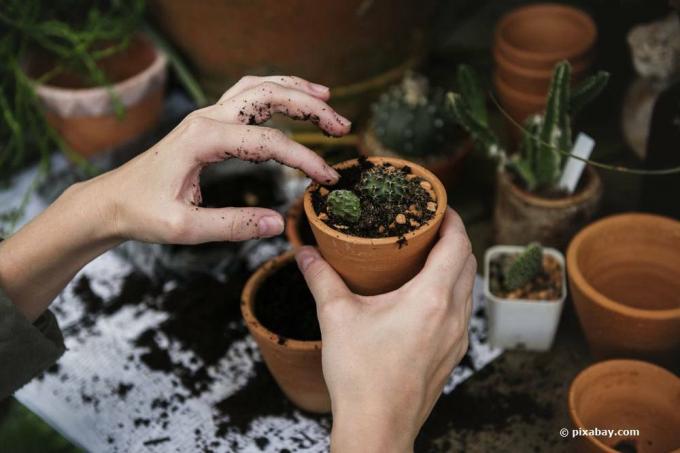
table of contents
- Cactus rot
- causes
- sunburn
- Lack of light and excess water
- Root rot
- Wrong substrate
- First aid in the case of a lazy trunk base
- Let the wound dry
- Planting
- Further care
- Offshoot
It's a big nuisance when the newly bought Columnar cactus or the given hedgehog cactus suddenly becomes wrinkled or squishy. Irrigation often plays a major role, which leads to putrefaction processes. But other causes can also cause the cactus to rot. In many cases, you can save the succulent plant as long as it hasn't completely softened. Therefore, act quickly at the first sign.
Cactus rot
If the kakus suddenly becomes soft and mushy, the signs are usually clear: it is rotting. In the following article you will find out what causes the cactus to rot and whether and how you can save the plant.
causes
There are several reasons why plant tissue suddenly becomes soft. The exotic plants have very special requirements for substrate and environment, because their growth has adapted to the conditions in their natural range. If the light, water and temperature are not correct, vitality is impaired.
sunburn
If the upper parts of the cactus develop yellow spots that soften over time, too much sunlight may be the cause. This phenomenon often occurs in spring when the cacti are taken from their winter quarters and placed directly in the sun. Many green species like it warm, but cannot tolerate direct sunlight. They grow in their home between tall shrubs and bushes. Raindrops increase the development of sunburn because they act like a magnifying glass. How to save the cactus:
- place in a partially shaded place
- Cut off yellow parts of the plant
- pour very sparingly

Note: Did you know that the yellow areas lignify over time? However, this can take a long time and carries the risk of further putrefactive processes if the care is not right.
Lack of light and excess water
A typical phenomenon in columnar cacti is that the base remains thin, while the upper part develops magnificently. The area above the root neck becomes soft and appears much lighter than the healthy part. Since the cactus lacks stability, it can no longer grow upright and bends over. Cacti develop such growth forms when they receive too little light and too much water. Similar phenomena also occur with spherical cacti, which grow increasingly in height. The stunted growth promotes putrefaction, as the base of the trunk receives less and less light. You should act at the latest when the fabric becomes mushy.
Root rot
If the exotic plant is watered too often, so that water collects in the substrate, rot can occur at the roots. The succulents are very sensitive to waterlogging because they are adapted to dry locations. When the fine roots rot, they provide an ideal breeding ground for fungal spores. Harmful fungi such as Botrytis or Phytophthora are often involved in root rot. They penetrate the organism through the damaged roots and spread there. As a result, the trunk can rot. If the base of the cactus is already badly rotting and thus looking soft and mushy, quick help is advisable.
Wrong substrate
In nursery shop windows, you may have seen cacti growing in aquariums filled with seramis. But if you recreate this arrangement at home, you can see brown spots on the base after a short time. If you don't act quickly, the cactus will rot and wrinkle. Seramis consists of fired clay, which has a porous structure and dusts. These clay balls store water and release it continuously. However, cacti cannot grow in pure clay. Your roots are too moist in the substrate and at the same time the fine clay dust can become a problem if it attaches to the fine roots. Cacti require little humus and large amounts of mineral rock. If you still do not want to do without the arrangement in the aquarium, you should proceed as follows:
- Fill the bottom about three centimeters high with seramis
- Pour a mixture of cactus soil, quartz sand and fine gravel on it
- Plant cacti and leave the root neck free
- Fill with gravel up to the base of the trunk
- Water carefully to prevent waterlogging
First aid in the case of a lazy trunk base
If the rot has not progressed too far, the cactus can be saved. It is important that it is still healthy in the upper part and that the tissue is not wrinkled or mushy. Handle the cactus with thick gloves or a piece of paper to prevent spines from penetrating the skin. Cut off the healthy part with a sharp and disinfected knife. There must be no putrid spots. Treat the wound with charcoal. It ensures that the interface does not become infected.
tip: In this way euphorbias can also be saved. To stop bleeding after the cut, hold the cut part under warm water for a few minutes.
Let the wound dry
It is important that the interface is dry before planting. In many cases, the rooting also works if cacti with an oozing wound have been stuck into the substrate. But there is a risk that the healthy part of the cactus will also rot in the substrate. So wait at least 24 hours before you stick the cactus into the substrate. Their tissue functions as a water reservoir, so that the plants can lie dry for a long time. If a hardened layer forms on the wound, don't worry. This so-called callus is a superficial wound cork. It protects the open area and ensures that no mold spores or pathogens can settle. The roots are formed on the edge tissue.
Planting
After the separated part has dried, it is animated to take root in a special substrate for cacti. For the greatest possible success, you should mix yourself a mineral-rich substrate. Cacti are adapted to nutrient-poor locations and require humus-free substrate, even if many hobby gardeners cultivate their cacti in potting soil. When buying cactus soil, pay attention to the composition. Often the products contain peat, the degradation of which causes the peatlands to recede.
- Equip the planter with drainage and fill it
- Moisten the substrate slightly
- Carefully press the cactus into the substrate
Further care
You can try to save both the lower part and the upper part. This only works if rot has not developed. Place the vessels in a light location. The substrate in both pots should not be watered for the next week. Cacti take root at different speeds. With some specimens new roots can be seen within a few days, other individuals take between six weeks and three months for root development. In some cases, the lower part regenerates when it receives more light again. The wound becomes lignified over time and the plant sprouts again at the edges.
tip: Always make sure that the relationship between light and water is balanced. Deficiency symptoms with the following putrefaction processes only appear when there is an imbalance.
Offshoot
Many cacti develop several shoots or offshoots that you can recognize by constrictions. Should your cactus be such Offshoot develop, you can simply cut them off at the constriction and root in a nutrient-poor and mineral-rich substrate. In this way, you can not only save rotten cacti, but also rejuvenate and multiply them at the same time.



